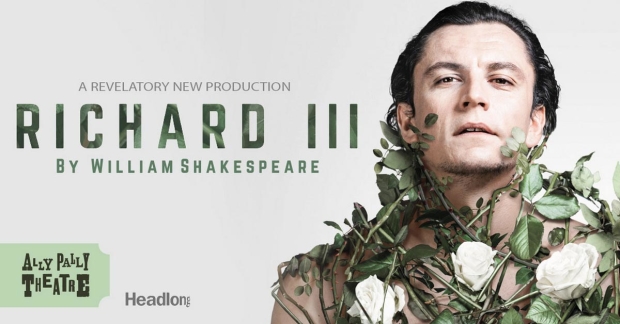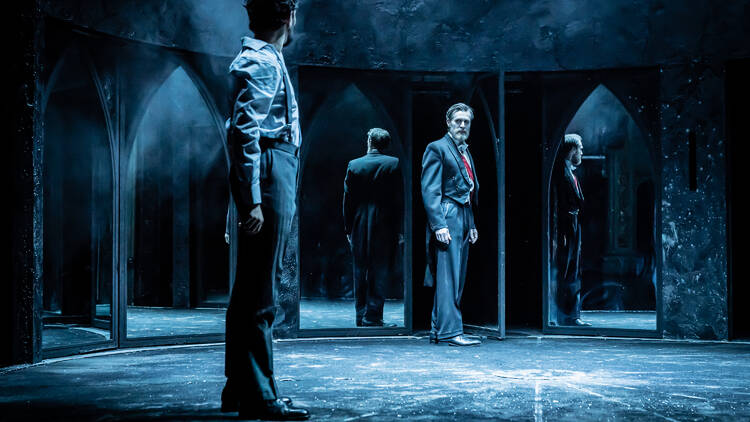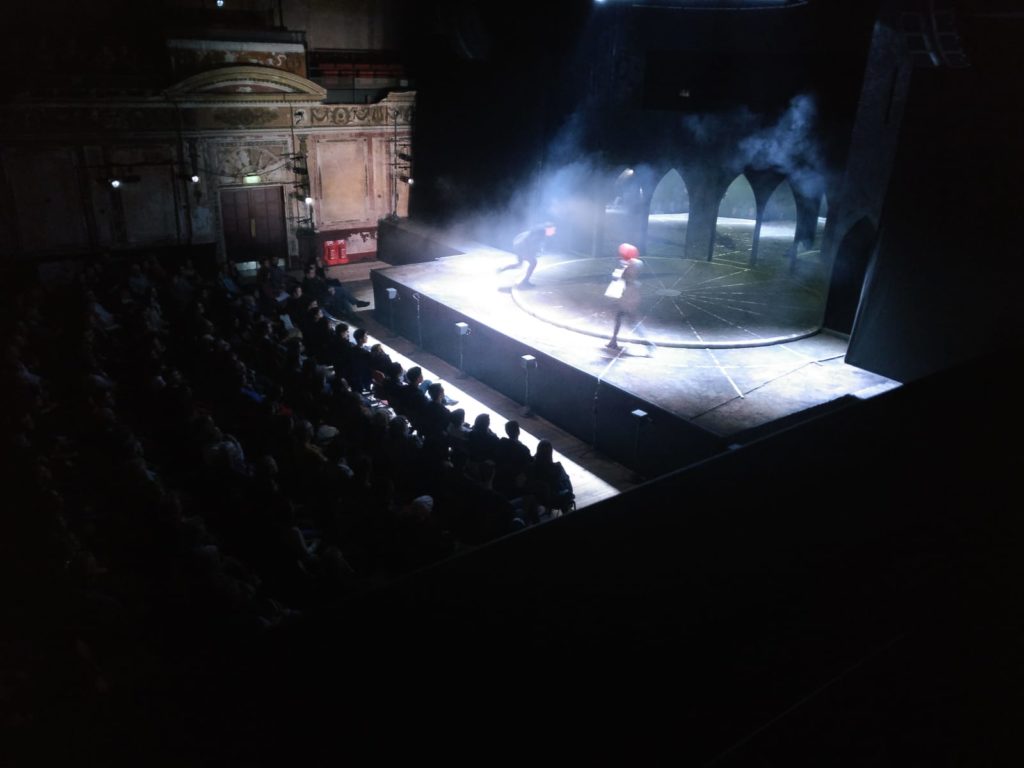Part of my effort to see every Shakespeare play.

It seems to me, there are three types of professional Shakespeare production. One, the Shakespeare specialist companies, the RSC, the Globe etc. They know what they’re doing, they hire people who are trained specifically to do Shakespeare, and they are badass at it. Two, the celebrity productions, driven by big names who may or may not actually have a background in Shakespeare, but who can get bums on seats and consequently a good crew and set designed. The performance is variable (Benedict Cumberbatch’s Hamlet was the worst Hamlet I’ve ever seen) but the staging is usually very good.
And then there’s the independent production companies, which are the most variable of all. Headlong, the company behind the production of Richard III I went to see at the Alexandra Palace, describes itself thus:
“HEADLONG MAKES EXHILARATING THEATRE FOR AUDIENCES ACROSS THE UK. A TOURING COMPANY WITH A BIG IMAGINATION, WE INTERROGATE THE CONTEMPORARY WORLD THROUGH A PROGRAMME OF FEARLESS NEW WRITING, RE-IMAGINED CLASSICS AND POTENT TWENTIETH CENTURY PLAYS.
VIA A COMBINATION OF BOLD ARTISTIC LEADERSHIP AND THE CHAMPIONING OF VISIONARY ARTISTS WE ARE ABLE TO CREATE SPECTACULAR WORK WITH THE HIGHEST POSSIBLE PRODUCTION VALUES.”
This means a psychological take on Richard III that involves lots of throwing of dirt around and screaming externally. It’s not modern unless it involves a naked man covered in mud personifying inner conflict. It is less likely to mean a good performance of Shakespeare.

Richard III is one of Shakespeare’s more popular plays in this day and age. It was also popular in the Tudor period, which is hardly surprising given it is pure Tudor propaganda. Henry VII, the first Tudor, had a somewhat tenuous claim to the throne, taking it as he did at the point of a sword, and so it very much served Tudor interests to portray Richard III as an evil man, scheming his way to the throne through murder and intrigue, literally crippled by how evil he is. History is written by the victors, so we’ll never really know what the last English King to die on the battlefield (aged 32) was really like as a person, or really as a king, as he only reigned for two years. Probs murdered the Princes in the Tower though, so he wasn’t a totally solid guy.
Alexandra Palace is also a beautiful venue to stage a play in, although when we talk about “restoring something”, I do usually expect it to be “restored” by the end. The bare walls left something to the imagination.
I was therefore left with very mixed feelings. The setting of the play had been moved forward into the present day for no particularly good reason – characters waved guns at each other, wore suits, and the whole feel was the chrome and glass look of modern design. The set was surrounded created all of these large two way mirrors behind which the ghosts of murders past stood poignantly or passed through at powerful moments. Murders were accompanied by a discordant digital shriek and red light, that no doubt seemed cool and modern to the designers but was mainly irritating.
Unbeknownst to me but the beginning of the play was not the actual play: “
Director John Haidar has had the clever idea of beginning the show with the end of Henry VI Part 3, when Richard stabs Henry to death in the Tower of London. The new king Edward IV may look forward to “our lasting joy”, as the House of York has defeated Lancaster in the Wars of the Roses, but the cycle of violence continues. As Henry has prophesied, the enemy is now within as Richard proceeds to wreak havoc. Each time Richard has someone murdered, the spirit of Henry appears to lead the victim away, until all the ghosts return to haunt Richard on the eve of his death. ” (Londonist) This is a shame, for the play, as I thought that was a great opener, so kudos to the director there.

But I very strongly disapproved of the final scene, in which Richard went full Nicholas Cage and, opening a little trapdoor in the middle of the stage, provided to put what I hope was an edible substance resembling dirt on his face, in his mouth, and throwing it at the mirrors as his deceased relatives looked on. I’ve tried to look up a couple of other performances on YouTube to see if this is normal, but it is unclear.
It has to be said, for all my criticism, that Tom Mothersdale did put in a cracking performance as Richard III. Wearing some kind of leg brace that twists his foot inwards and prevented him from standing, I felt they’d played up the Tudor propaganda thing but it did also make the character a vortex of pity as well. It made for a stark contrast as he murdered kings, children, family members, and seduced Anne Lady Neville, even as she grieves the loss of her father, whom he has murdered. It was all super creepy and well played. The best performances involve acting rather than buzzy red lights.
In general, I’m not sure what to conclude about how I feel about Richard III based on this production. The people I was with felt the same way, and we concluded that perhaps we might need to just go see another Richard III in the near future to make a true judgement. I’ll let you know.
